Desire to flaunt your expensive shoe collection boldly? Footwear and shoes are an essential part of a human's lifestyle. A designated shoe rack design can accommodate all your precious collections in one place. While entering your home, a shoe rack is typically placed at the entrance or beside the main door. The design of the shoe rack is crucial as it's the first object your guests would notice while setting foot inside your home. To give them an impression worth remembering, Decorpot brings you creative and useful shoe rack design ideas that blend functionality with flair.
Different Types of Shoe Racks for your home
A Shoe Rack in the Wardrobe:
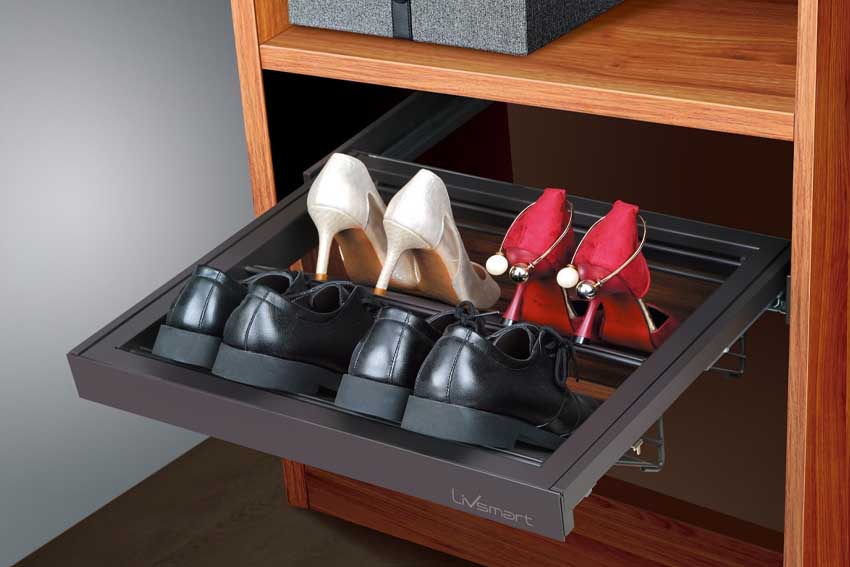
Want to streamline your morning routine? Place a shoe rack in or beside your wardrobe to access footwear quickly while dressing up.
A Shoe Rack with a Bench:
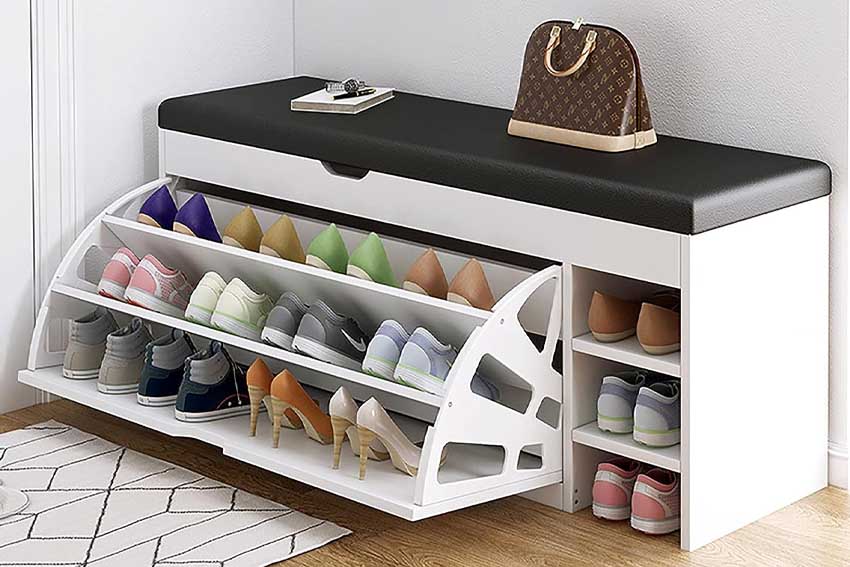
Add comfort and utility with a bench-style shoe rack design, ideal for slipping shoes on or off easily, especially for guests or elders.
An Open Shoe Rack:
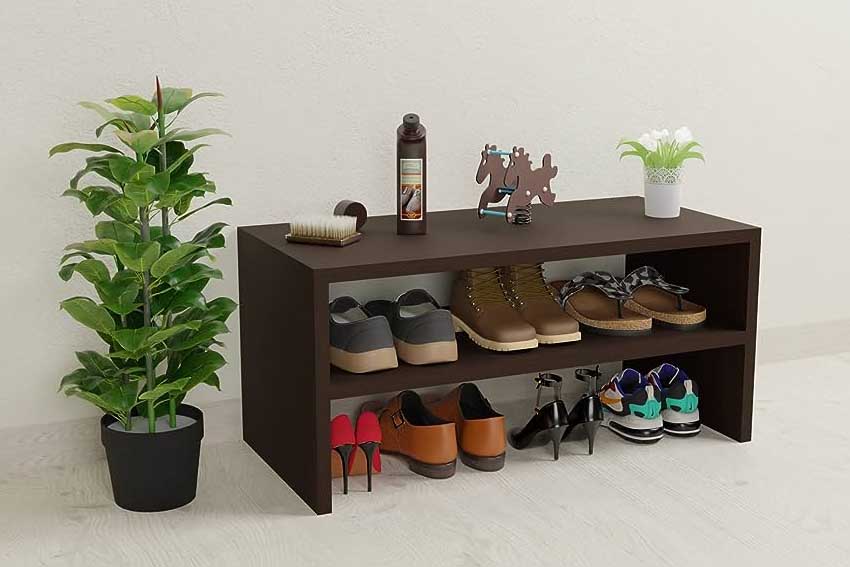
Looking for a minimalist approach? This shoes rack design for home keeps things
simple, affordable, and functional for daily use.
A Shoe Rack with Mirror Cabinets:
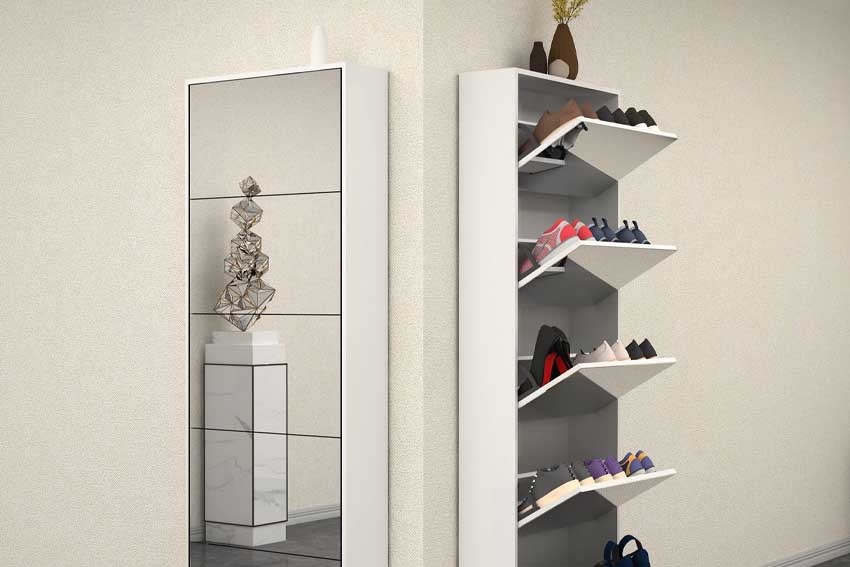
This modern twist reflects both style and practicality. The mirror lets you check your footwear before stepping out.
A Showcase Cabinet Shoe Rack:
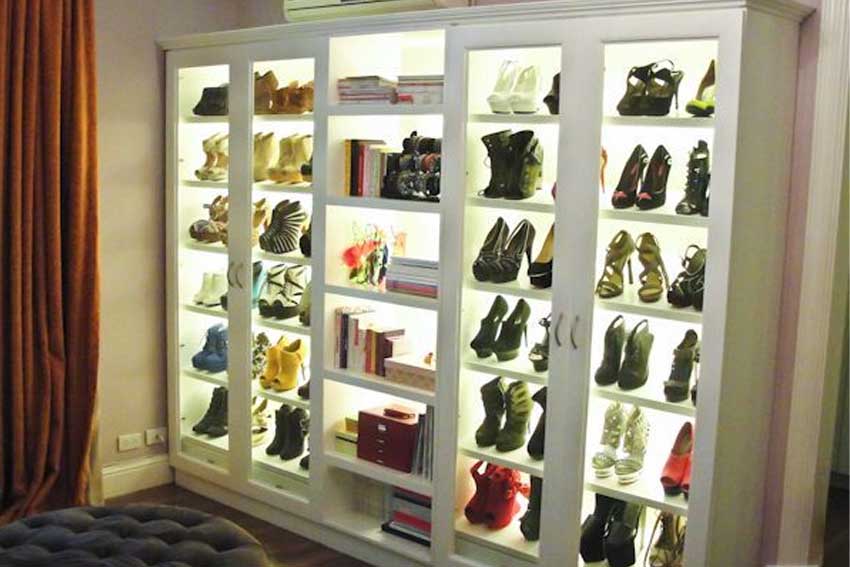
Let your shoe collection take center stage with a showcase cabinet — a transparent and elegant storage solution for shoe lovers.
Under the Stairs Shoe Rack:
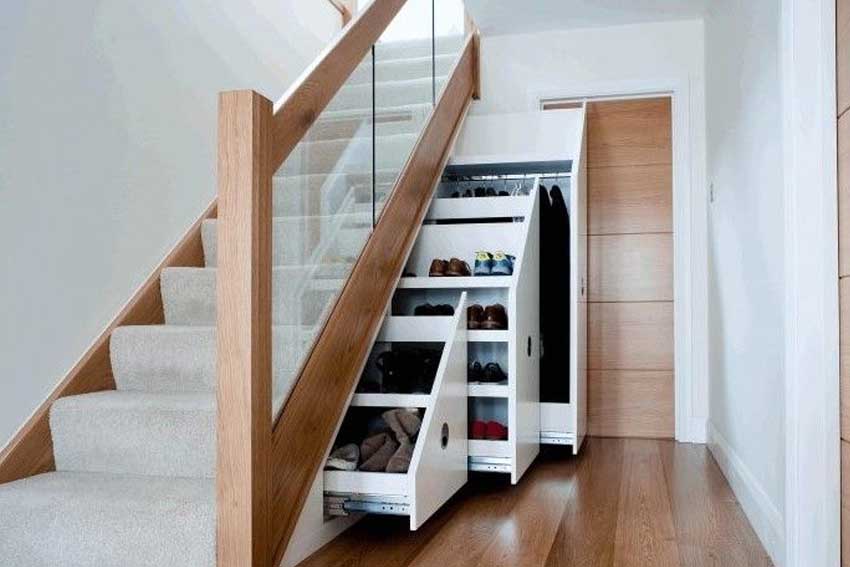
Make the most of unused space with this smart shoe rack design at entrance alternative that adds utility without occupying extra floor area.
A Hanging Shoe Rack:
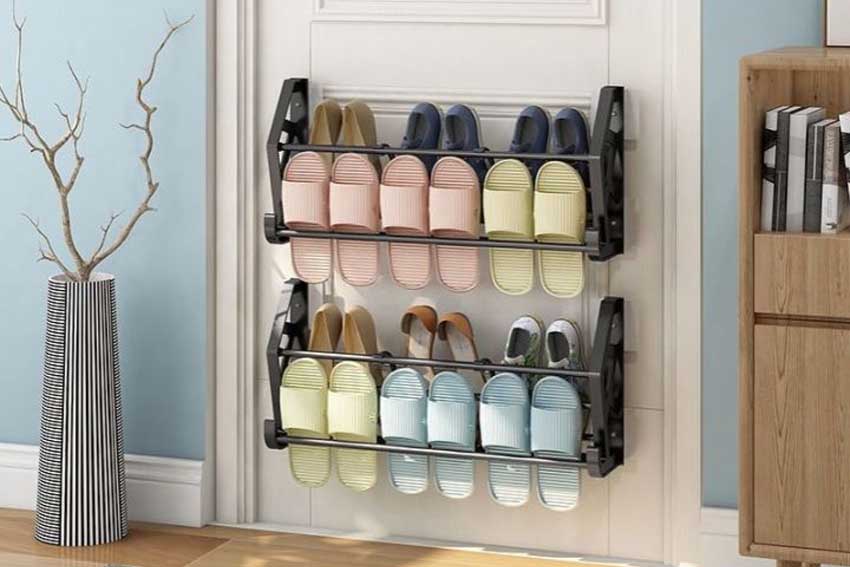
Use the back of wardrobe doors or grab rails to hang shoes. It’s ideal for large collections and small spaces.
Wall Mounted Shoe Rack:

Free up floor space with a wall-mounted shoe rack that looks sleek and adds vertical storage appeal to modern interiors.
Slanted Shoe Rack:
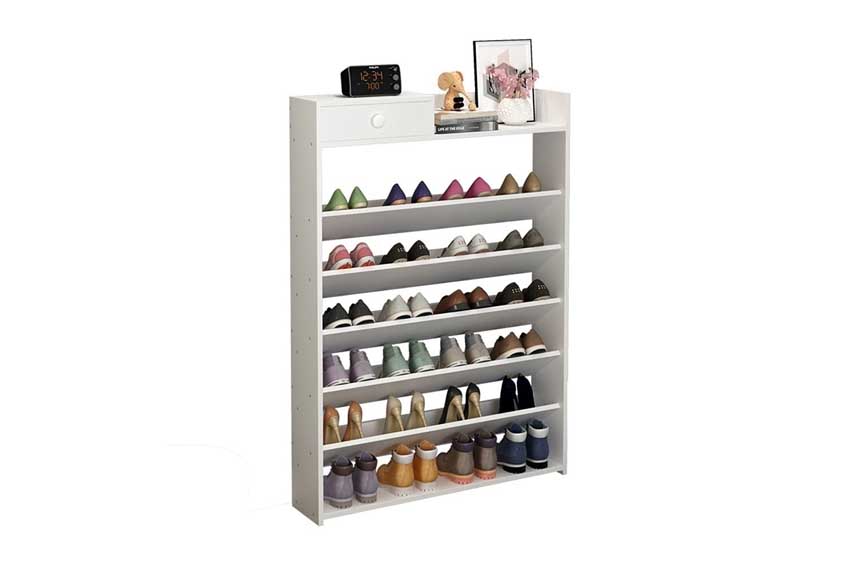
Use wooden planks slanted along staircase sides. This not only stores shoes but enhances interior aesthetics innovatively.
An Asymmetric Shoe Rack:
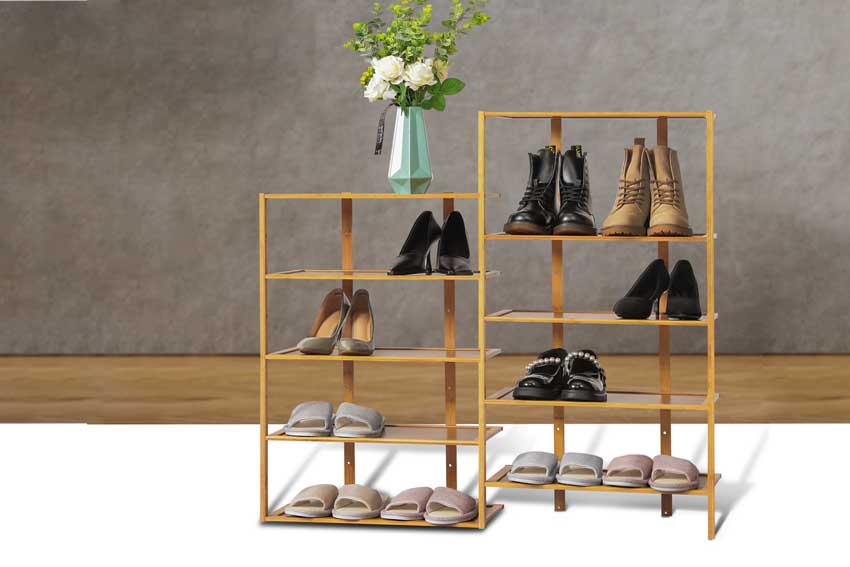
Add drama with an asymmetric shoe rack design that breaks away from symmetry and turns your storage into decor.
Adjustable Plywood Shelves Shoe Rack:
Perfect for boots and oversized shoes, this adjustable option combines flexibility and durability.
Open Plywood Shoe Rack with Shelves:
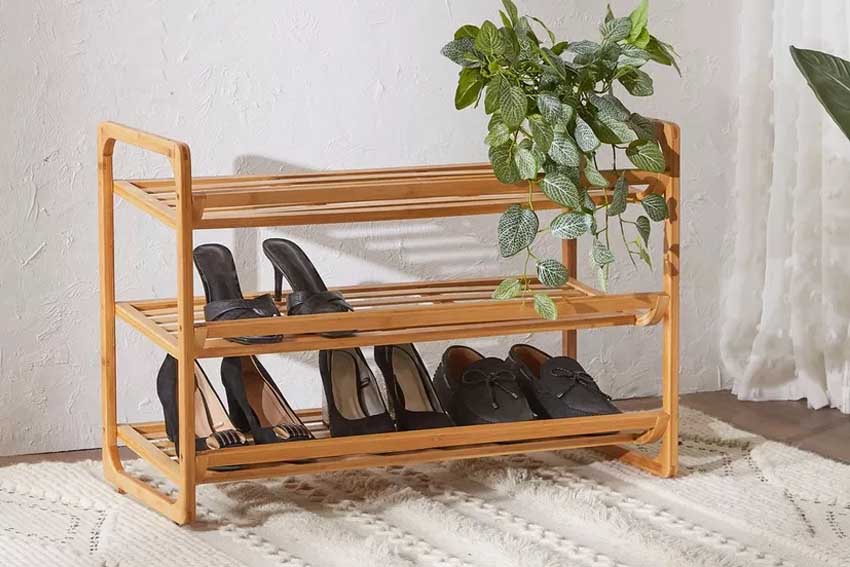
Add flair by keeping it half-open, with a shelf on top for decor elements like candles or vases.
Ladder Shaped Shoe Rack:
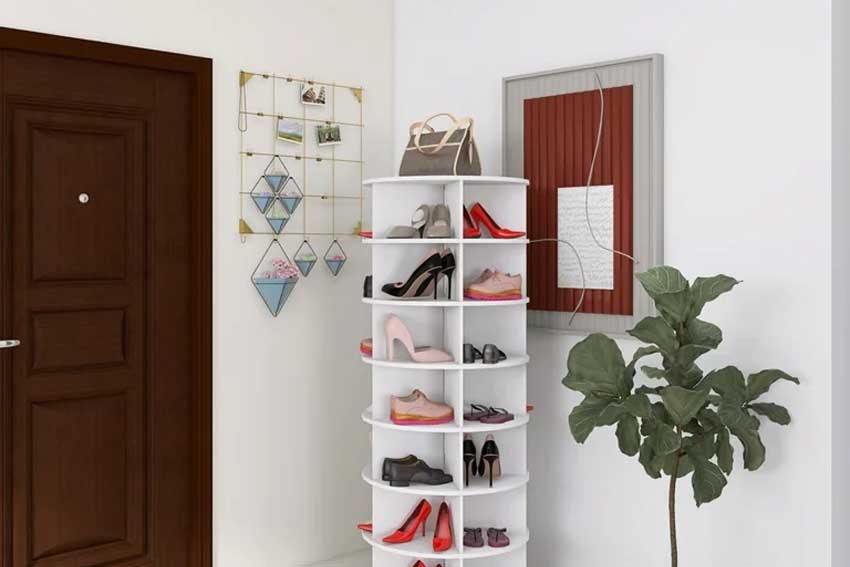
Turn heads with a ladder-style rack. This latest shoe rack design fuses rustic charm with modern creativity.
A Rotating Shoe Rack:
Maximize compact spaces with a rotating stand. Ideal for small homes, it lets you pick and rotate your choices easily.
PVC Pipes Shoe Rack:

Repurpose leftover pipes into a creative shoe rack — a DIY marvel that’s budget-friendly and functional.
Advantages of a Well-Planned Shoe Rack
- Keeps your footwear protected from dust and damage.
- Helps maintain clean floors free of shoe marks.
- Adds organization while optimizing space, especially with the best design for shoe rack customized to your layout.
Why Choose Decorpot?
With over 4,250+ completed projects, Decorpot is your go-to for thoughtful and modern shoe rack design and home interiors. From compact urban layouts to large family homes, we create tailor-made furniture that suits your lifestyle and budget. Our expert designers ensure you get both utility and aesthetic charm in every corner of your home.
Ready to upgrade your home entrance?
Contact our design team now and Book a Free Consulation
to explore your personalized shoe rack and interior design options.
FAQ’s
Q1. What materials are used to make a good shoe rack?
The most commonly used material used for making a shoe rack is wood. This can either be Oakwood or Sheesham wood. Some shoe racks also have a laminated wooden finish.
Q2. Where do we keep the shoe rack?
It is ideally recommended to keep a shoe rack outside the door or beside it. You can also place one after the entrance of your home. Some people also keep them in the washroom.
Q3. What depth is required for a shoe rack?
A person can make a decision about this depending on the size of his shoes or footwear. Mostly, the depth can be about 13 inches to 15 inches.

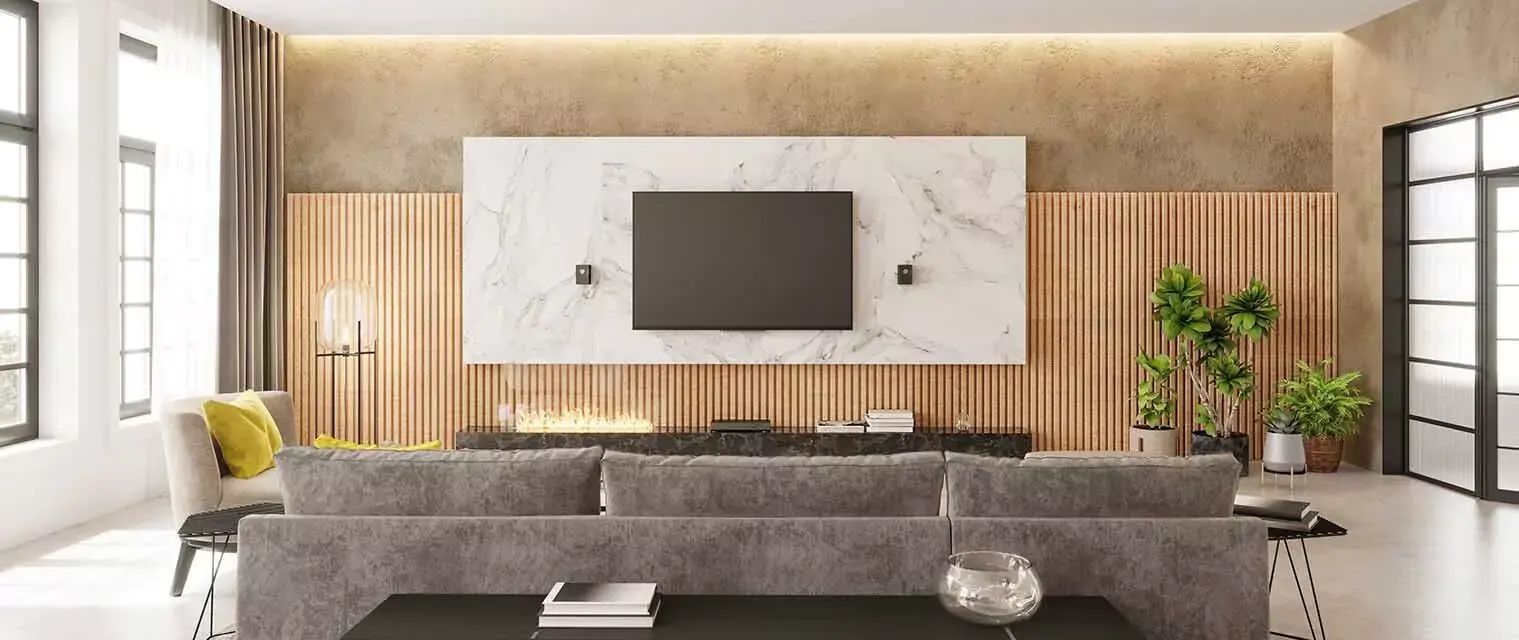
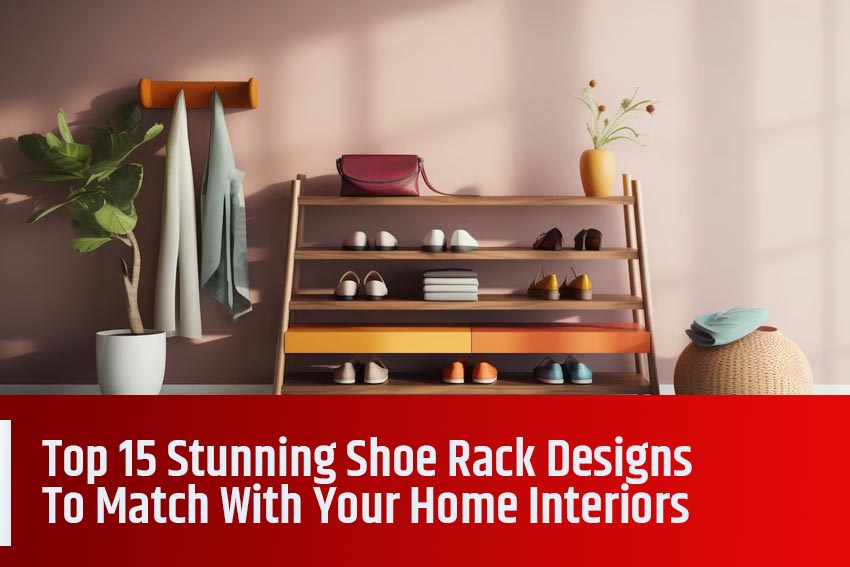

.png)

.png)



 2025 | All Rights Reserved
2025 | All Rights Reserved